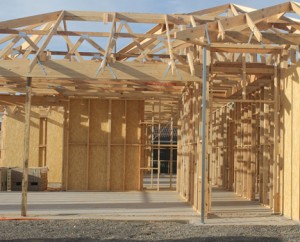Latest figures confirm the number of new home commencements rebounded in the March quarter of 2015, said the Australian Housing Industry Association (HIA). Source: Timberbiz
“The strong result for the March 2015 quarter was the second highest level for any quarter on record,” said HIA economist Geordan Murray.
“This latest result was consistent with our expectations, and the mix of dwelling types commencing construction was aligned with the recent trend.
“The number of detached houses commencing construction held steady at a relatively high level, while a rebound in multi-unit dwelling commencements provided the lift.”
The ABS figures show that 53,900 dwellings were commenced during the March 2014 quarter.
Detached dwelling commencements held relatively steady, increasing by 0.7% in the March 2015 quarter to 28,761, while ‘other dwelling’ commencements (predominantly multi-unit dwellings) jumped by 19.2% to 25,140. This composition was aligned with HIA’s forecast for the quarter.
“A surge in multi-unit dwelling commencements in Victoria was the primary driver of the increase during the quarter. The state recorded over 9,000 multi-unit commencements, which is a record high,” said Mr Murray.
“In the 12 months to March, almost 205,000 new dwellings were commenced – this is the first time the 200,000 mark has been breached.
“Further to this, our assessment of leading indicators suggests that the number of commencements in the June quarter was even higher.
“When we get the final result for the 2014/15 fiscal year it is likely to show more than 210,000 new dwellings were commenced during the year.”
During the March 2015 quarter, new home starts increased in New South Wales (up by 1.9%), Victoria (up by 18.8%), Queensland (up by 20.9%) and the Northern Territory (up by 12.0%).
Elsewhere, there were sizable declines and most notably in South Australia where the strong result in the December quarter was reversed by a 18.0% decline in the March quarter.
The number of commencements also fell in Western Australia (down by 4.8%), Tasmania (down by 14.7%) and the ACT (down by 14.4%).






